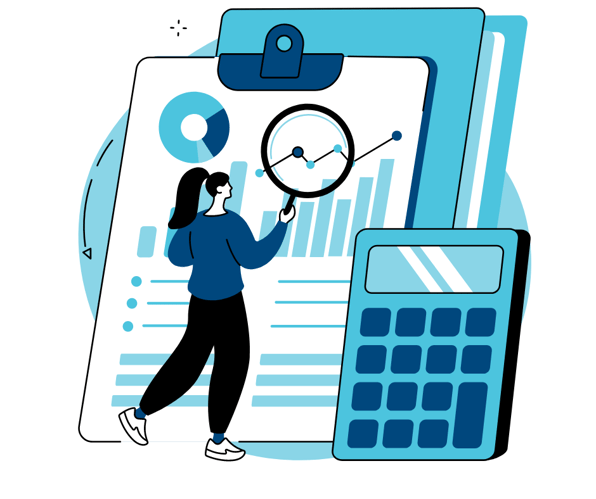
The e-commerce return KPIs you need to be tracking

How can you accurately evaluate the effectiveness of your e-commerce returns management policy? What indicators should you use?
If you already have an effective returns policy, you know that maximising customer retention and satisfaction is the most important thing. However, choosing the right indicators and interpreting them correctly is not always easy.
In this article you will find the KPIs that you should monitor.
What do you need to measure when it comes to returns management?
Product return rate
This is obviously the first and standard indicator that comes to mind. By definition, a return is an order, or part of an order, that is sent back to the brand. You can then classify them according to different reasons; either the return is caused by an error on the merchant's part, or it is the case of the customer changing their mind.
Your return rate tells you what percentage of your orders has been returned out of all the orders that have been placed.
The return rate is calculated as follows:
Items returned / Total items ordered
It is worth noting that return rates vary, depending on the retail sector. For example, the clothing sector is more affected than the electronics. The rates can also vary from country to country. In Germany, consumers return goods fairly frequently. This is partly due to a widely used German payment method that charges the buyer 30 days after purchase. So they don't pay when they order.
The return rate allows you to analyse problems such as the quality of the product or the way you promote it on your site. Either the product did not meet your customers' expectations in terms of quality, or your brand did not live up to the promise of its marketing message (e.g. to descriptions and features on online product sheets, photos etc).
Remember to record the time spent on each return. Your teams should not spend too much time managing those. If it is the case, you are not using the right tools.
Product exchange rate
A well-structured return policy encourages exchanges instead of refunds. This is why it is important for you to split up your return requests in order to have a more detailed analysis of your manufacturing and marketing activities.
This is how it is calculated:
Items exchanged in a given period / Total items returned in the same period
This rate tells you the percentage of returns for which you retain your customer. Exchanges help maintain the relationship with your customers, whereas a refund usually indicates the end of that relationship. Create feedback surveys and questionnaires to find out the reasons for the exchanges and how you can improve the post-purchase experience for your customers.
Refund indicators
Refund indicators allow you to judge the quality of your returns policy. Here are the 3 main indicators you should track:
Click to refund: the period in calendar days between the date of the first scan and the date of refund.
Time to refund: the period of time in working days between the date of possession (arrival in the warehouse) and the refund date.
Delay in refund: the period of time in calendar days of delayed refund / compared to a theoretical refund period.
You can monitor these indicators yourself or use a solution that helps you analyse this specific point during the post-purchase phase.
Ces articles pourraient vous intéresser


10 best practices to improve your post-purchase communication
Once payment of online order is made, there will be a rupture between you and your customer. In...

E-logistics: how to control costs and optimise your transport budget?
As an e-tailer, you regularly ship orders. You are certainly aiming to control your flows and...
